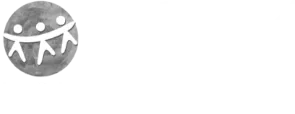Understanding the most prevalent CSR models today
The rapid growth of the nonprofit sector that we’re seeing is a new phenomenon. In the 1980s, or even the early 1990s, if you wanted to work with disadvantaged communities, finding suitable grassroots-based nonprofit organisations was a challenge.
And so Indian companies that were so inclined had to set up their own implementing foundations or trusts. This was the route that the Tatas, Godrejs and many others took. Only in the past 25-30 years has this picture started changing.
I used to work with ActionAid, which was set up in the 1970s. It was only after a decade of operating as an implementing organisation that we could evolve into a grant-making institution. Before then, there just weren’t enough nonprofits to support.
For companies setting up CSR units today to comply with The Companies Act, 2013, giving grants is the preferred and often most feasible choice. Especially given their small team size, limited expertise in implementing their own programmes and the large number of potential nonprofit partners.
The CSR models we see today are, therefore, either wholly self-implementing (especially true for companies that have been doing this for decades) or focused entirely on giving grants (more true for companies new to CSR), and in some cases a mix of both.
What nonprofits need to know about the CSR approach of companies
Companies are trying to get it right
The Companies Act 2013 was a watershed moment in that it created urgency within companies to contribute to CSR. In the beginning, a few companies that hadn’t been giving but were mandated to do so under the Act sought creative ways to “game” the system. But that did not last.
Corporates have realised that since they must do this, it makes most sense to do it well. This thinking has been growing; it may still take some years for CSR to fully adapt, but companies are approaching it in the right spirit.
The question of geography
Different kinds of companies approach CSR differently.
Manufacturing companies want to serve the communities around their factories. They recognise that manufacturing is inherently disruptive and so they must limit its negative impact as much as possible while improving conditions in neighbouring villages. Hence, most seek nonprofit partners working with communities around their plants.
Service-oriented companies, by contrast, can be more geographically flexible. That said, they might prefer to support nonprofits running programmes near their offices so that their employees can get involved.
Manufacturing companies want to serve the communities around their factories; service-oriented companies can be more geographically flexible.
Nonprofits that understand this well can strategise how they develop partnerships with different kinds of companies for greater success.
Most companies are interested in specific and quantifiable outputs, because that is the world they understand
Corporates tend to bring their skills such as project management, technical or specialist skills, and output orientation to their CSR work.
They are most interested in tracking the measurable change that an intervention creates because that’s the world they occupy every day. They derive comfort from seeing thought-through business plans, budgets and audit trails.
At the Tata group, our companies are expectedly output-oriented and we are trying to get many to emphasise long-term outcomes. Some already do this; others are learning how to–it takes time.
The insight for nonprofits, therefore, is to develop proposals that are clear on outputs and processes, demonstrate a well thought-through strategy and are jargon-free.
How non-profits define core development issues can be very different from how companies do it
What nonprofits define as core development issues, such as social justice and rights-based approaches, will not be embraced easily by companies, not because they lack importance but because measuring outputs, efficiency and the metrics that companies understand is difficult.
Even as CSR evolves, this discomfort with topics that are nebulous, political, and perhaps even controversial, will persist.
Also worth noting is that companies increasingly view CSR as a strategic rather than purely philanthropic activity. This means that companies will want to align their CSR activities with their business because that brings in their expertise and also enables volunteering.
Nonprofits must not judge this as long as the benefits to communities are clear and unambiguous, which is the real purpose of CSR!
Companies’ CSR policies are now publicly available
One of the many positives of the CSR clause of the Companies Act is the requirement that companies post their CSR policies–defining, amongst other things, the sectors and geographies that they cover–in the public domain. This makes it easy for nonprofits to know what a company’s CSR priorities are and ensure that their proposals are suitably aligned.
How corporate giving will change over the next five years
Post-2013, India is already seeing a growing migration of professionals from traditional development to CSR. As this increases, companies will become more knowledgeable about social issues, what it takes to tackle them and the challenges that nonprofits face. Over time this changing profile of CSR professionals will facilitate greater congruence between the corporate and nonprofit worlds.
Decision-making around whom to fund will gradually improve. Because companies tend to be hierarchical, the people making decisions around whom and what to support under their CSR aren’t always the ones most knowledgeable on the subject.
Because the law demands a CSR Committee of the board, decision-making is now a board agenda, spread across a number of people. While this may slow decision-making, it is worthwhile because now the leadership is more closely involved and decisions tend to be more deliberate and thought-through.
Companies will move away from traditional hands-off cheque-writing.
As knowledge and decisions improve, so will the grant-making model. Companies will move away from traditional, hands-off cheque-writing. Instead they will work together with the nonprofit to identify the problem they want to solve.
While they will increasingly defer to the nonprofit’s expertise, they will bring to bear their own and will seek partnerships that create opportunities for their employees’ participation.
At the Tata group, we understood this a while back and put in place a volunteering programme called Tata Engage that enables employees, their families and even retired staff to volunteer their time and expertise.
The CSR checklist for companies
- Define your outcomes and stick with them over time. Change takes much longer than the 1-2 year timeline companies expect because, often, development interventions are about changing traditional practices and mindsets and making them future-proof. Determine these outcomes the same way as you approach business: Understand customer needs and find solutions that meet those needs.
- Be adaptable. Community interventions involve people and cannot be deterministic. There needs to be room for flexibility for the nonprofit too.
- Invest in the nonprofit-corporate partnership as it is inherently complementary. Nonprofits know what companies don’t and vice-versa because, at the end of the day, CSR is simply social and human development undertaken by companies!
As told to Rachita Vora and Devanshi Vaid of IDR.
Disclaimer: One of our co-founders is a consultant with the Tata group.




